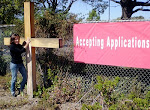John 12:1-8 Six days before the Passover Jesus came to Bethany, the home of Lazarus, whom he had raised from the dead. There they gave a dinner for him. Martha served, and Lazarus was one of those at the table with him. Mary took a pound of costly perfume made of pure nard, anointed Jesus' feet, and wiped them with her hair. The house was filled with the fragrance of the perfume. But Judas Iscariot, one of his disciples (the one who was about to betray him), said, "Why was this perfume not sold for three hundred denarii and the money given to the poor?" (He said this not because he cared about the poor, but because he was a thief; he kept the common purse and used to steal what was put into it.) Jesus said, "Leave her alone. She bought it so that she might keep it for the day of my burial. You always have the poor with you, but you do not always have me."
Reflection The ritual practice of anointing has occurred across diverse cultures for thousands of years for several purposes. Since ancient times smearing oil, scented water, melted butter or perfume on a prophet, priest or king ceremonially imbued them with God’s Holy Spirit so to do their given work. In other words, the ritual had a transformative dimension which ‘empowered’ them to execute their vocation. By contrast, when Mary extravagantly anointed Jesus’ feet not only did she expresss her overflowing affection but she also disclosed her recognition of Jesus as the Christ, Khristós, the man who was already the anointed one. Mary’s ceremonial action was not efficacious in the sense of being associated with the arrival of the Holy Spirit. Rather, she identified the Divinity of Jesus already present. Jesus interpreted Mary’s anointing in yet another fashion; in ritual preparation for his burial. It was Jewish custom for women to wash and anoint a body with oil and spices as part of ancient funerary rites. Mary’s anointing of Jesus’ feet foreshadowed his death.
Today in the Episcopal Church we use chrism, which is oil that has been consecrated for the purpose of anointing, during baptisms and in the pastoral office of anointing of the sick. During Baptism the bishop or priest makes the sign of the cross on the newly baptized person’s forehead saying, “You are sealed by the Holy Spirit in baptism and maked as Christ’s own forever. Amen.” In other words, in the context of Baptism, anointing identifies who (and whose) the newly baptized person is. In the Laying on of Hands and Anointing of the Sick, the priest or deacon makes the sign of the cross on the person’s forehead praying the person be filled with grace, healing power and be restored to wholeness and peace. In this usage anointing expresses a transformative dimension and evocation of God’s of Holy Presence.
As a priest given the privilege of anointing let me just say this. Whether I am placing a myrrh scented sign of the cross on an infant’s pristine forehead or an elder’s furrowed brow the compliment of touch, and smell, and prayer arouses Divine Presence and reaches beyond time.



